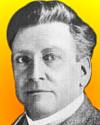
On 7 May 1925, William Lever, Lord Leverhulme, died. He created a massive industry as the Lever Brothers soap manufacting industry with international production.
What was remarkable about his philanthropy was the way in which he believed in a six-hour work day for his employees, as just one aspect of his support for his workers' living conditions. At his great soap works of Port Sunlight, England, he built a town to house his employees, with churches, clubs, schools for children, technical schools for adults, an inn, swimming pool, hospital, library, gymnasium, baths, tennis courts and common gardens.
An article in a 1919 issue of The Chemical Age, Soap and Sociology, provides an insight into a far higher concern for the workers than is seen in present times!

On 7 May 1911, Raymond Arthur Lyttleton was born, an English mathematician and theoretical astronomer who researched stellar evolution and composition. In 1939, with Fred Hoyle, he demonstrated the large scale existance of interstellar hydrogen, refuting the existing belief of that space was devoid of interstellar gas. Today's book pick is: Mysteries of the solar system, by Raymond Arthur Lyttleton, which contains seven essays, expanded from a series of lectures given at Brandeis university in 1965. They cover topics studied by the author during his 30 year career. He writes in an informal style that makes easy reading.
It is available from Amazon, typically about Used from $4.54. (As of earlier time of writing - subject to change.)
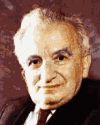 | The scientist describes what is; the engineer creates what never was. |
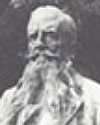 | Civilisations as yet have only been created and directed by a small intellectual aristocracy, never by crowds. Crowds are only powerful for destruction. |
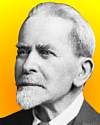 | As science has supplanted its predecessors, so it may hereafter be superseded by some more perfect hypothesis, perhaps by some totally different way of looking at the phenomena—of registering the shadows on the screen—of which we in this generation can form no idea. The advance of knowledge is an infinite progression towards a goal that for ever recedes. |
| Before you look at today's web page, see if you can answer some of these questions about the events that happened on this day. Some of the names are very familiar. Others will likely stump you. Tickle your curiosity with these questions, then check your answers on today's web page. | |
| Births | |
 | On 7 May 1939, Sidney Altman was born, a Canadian-American molecular biologist who won a share of the 1989 Nobel Prize for Chemistry. His work concerned what is known by the letters RNA. What is the full name for RNA? |
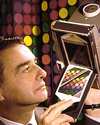 | An American inventor and physicist, born 7 May 1909, created the one-step process for developing and printing photographs which was the greatest innovation in photography since the introduction of roll film. He first demonstrated the Polaroid camera in 1947, which gave fully developed prints in 60 seconds. He also applied the name Polaroid to the light-polarizing filter as used in the lenses of sunglasses. What is the name of this inventor? |
| Deaths | |
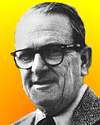 | Allan MacLeod Cormack was a South African-born American physicist (1924-1998) whose formulation of mathematical algorithms made possible a powerful new disagnostic X-ray imaging process. First described in his paper of 1963, the method used a machine that a series of imaginary slices through a body. For this work, he won a share of a Nobel Prize in 1979. What imaging process did he create? |
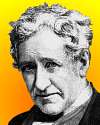 | James Nasmyth (1890-1808) was a British engineer who is remembered primarily for his invention of a steam operated machine. For what steam-operated machine is Nasmyth remembered? |
| Events | |
 | On 7 May 1963, it was time for AT&T to replace an earlier communications satellite, and it was launched on this date. On its tenth orbit, it transmitted the first transatlantic TV program seen in color. It took its name after the earlier famous U.S. satellite, but followed by "II." What is the name of the satellite used to transmit the first transatlantic color TV program? |
 | On 7 May 1955, an important U.S. national vaccination program was suspended due to problems with faulty production of the vaccine. Some children had acquired the disease from the vaccine that was supposed to be prevented. For what disease was the vaccine intended? |
 | On 7 May 1952, the concept was first published for what became the next generation of electronic components after the invention of the transistor. The inventor was Geoffrey W.A. Dummer. What is the name of this next generation electronic component? |
Fast answers for the previous newsletter for May 6: Victor Grignard • Robert Edwin Peary • Henry David Thoreau • Polaris submarine • (Lakehurst) New Jersey • mechanical refrigerator.
 If you enjoy this newsletter, the website, or wish to offer encouragement or ideas, please send feedback by using your mail reader Reply button.
If you enjoy this newsletter, the website, or wish to offer encouragement or ideas, please send feedback by using your mail reader Reply button. Your click on a Facebook, StumbleUpon, or other social button on the site webpages is also a welcome sign of appreciation. Thank you for using them.
© This newsletter is copyright 2020 by todayinsci.com. Please respect the Webmaster's wishes and do not put copies online of the Newsletter — or any Today in Science History webpage. (If you already have done so, please remove them. Thank you.) Offline use in education is encouraged such as a printout on a bulletin board, or projected for classroom viewing. Online, descriptive links to our pages are welcomed, as these will provide a reader with the most recent revisions, additions and/or corrections of a webpage. For any other copyright questions, please contact the Webmaster by using your mail reader Reply button.
--
If you do not want to receive any more newsletters, Unsubscribe
To update your preferences and to unsubscribe visit this link
Executive Real Estate Business Class
-
"It was like a man with wings. It wasn't like anything you'd see on TV or in a monster movie." ...
About the publisher
Search This Blog
Blog Archive
-
▼
2020
(1542)
-
▼
May
(194)
- FAMILY: Building kindness in a tough time
- What is history's biggest mystery?
- On This Day for May 31 - Adolf Eichmann hanged, Cl...
- Globalist Race War? because COVID Coup exposed? ...
- Newsletter for Sunday 31 May.
- May 31: Battle of Jutland, Earthquakes and the Clo...
- BREAKING NEWS: SpaceX launches new era of spacefli...
- The Compass: Spain
- On This Day for May 30 - Joan of Arc burned at the...
- Newsletter for Saturday 30 May.
- CORONAVIRUS SPECIAL EDITION: The best way to clean...
- May 30: Voltaire the Rebel
- This Week's Roundup Top Ten from History News Network
- On This Day for May 29 - Mount Everest summit reac...
- Newsletter for Friday 29 May.
- You & your loved ones can be Involuntarily Quarant...
- YOUR WEEKLY ESCAPE: The famous Viking warrior who ...
- May 29: Return of Charles II, Mt. Everest Knocked ...
- Alone Returns With a $1,000,000 Prize
- On This Day for May 28 - Amnesty International fou...
- The secular utilitarian U.N. New World Order has a...
- Newsletter for Thursday 28 May.
- May 28: Spanish Armada Sets Sail, The Indian Remov...
- SCIENCE: Restoring an American frontier
- Breaking News from History News Network
- On This Day for May 27 - Founding of St. Petersbur...
- Christian History Magazine: Covid-19 Response
- Newsletter for Wednesday 27 May.
- Learn whose pulling the strings what the media ha...
- May 27: Habeaus Corpus, Priam's Treasure and Dunkirk
- TRAVEL: Find the secrets to your backyard
- Journey with Ancient Explorers when you subscribe ...
- On This Day for May 26 - Martin Luther declared a ...
- Newsletter for Tuesday 26 May.
- May 26: Start of the Dow Jones Index, Middle Easte...
- HISTORY: The tumultuous past of the U.S. Postal Se...
- A Memorial Day Offer from Britannica!
- Grant Premieres Tonight!
- New This Week On History News Network
- On This Day for May 25 - U.S. Constitutional Conve...
- Economic Re-Opening is a Fakeout + CDC numbers rev...
- Newsletter for Monday 25 May.
- May 25: On This Day in History
- FAMILY: Moving past a big disappointment
- The real history behind WW2 film 'Greyhound' | Ann...
- On This Day for May 24 - Opening of the Brooklyn B...
- Newsletter for Sunday 24 May.
- Vaccine: 20 percent Serious Injury after skipping ...
- May 24: Methodism, Morse Code and the Bridge that ...
- The Compass: Argentina
- Your New Favorite Podcast
- On This Day for May 23 - Tibet annexed by China, C...
- Watch all the talks from BBC History Magazine's Me...
- Newsletter for Saturday 23 May.
- Dolores Cahill PhD expert in molecular genetics an...
- CORONAVIRUS SPECIAL EDITION: There's a reason so m...
- May 23: The Crazy Trigger for the Thirty Years War
- PHOTOGRAPHY: Capturing 59 years of human spaceflight
- How Booze, Drugs, And A Woman Named June Destroyed...
- A Memorial Day Sale for Everyone!
- The Roundup Top Ten from History News Network
- On This Day for May 22 - Roman Emperor Constantine...
- Newsletter for Friday 22 May.
- YOUR WEEKLY ESCAPE: What do the world's happiest p...
- May 22: The World's 1st Atlas is Published and WWI...
- ANIMALS: Saving the pangolin
- On This Day for May 21 - First nonstop solo transa...
- May 21: The 1st Transatlantic Flights and some Mem...
- Ron Panzer interview will air on Friday on Trunew...
- Grant: Watch the Extended Opening Scene
- SCIENCE: Food supply challenges prompt creativity
- Breaking News from History News Network
- On This Day for May 20 - U.S. Homestead Act signed...
- Newsletter for Wednesday 20 May.
- Ron Panzer interview: Trunews.com Today at 3 pm E...
- May 20: Vasco da Gama, Shakespeare and My Fair Lady
- TRAVEL: The promise of happiness, even now
- Inspire Their Curiosity w/ Nat Geo Kids Magazine
- On This Day for May 19 - Ringling Bros. Circus for...
- When we learn what the vaccine will do to everyone...
- Newsletter for Tuesday 19 May.
- May 19: On This Day in History
- See The Most Accurate Map In The World
- HISTORY: At 110 years old, he made our cover
- New This Week on History News Network
- On This Day for May 18 - Eruption of Mount St. Hel...
- Newsletter for Monday 18 May.
- May 18: On This Day in History
- FAMILY: Helping your kids after their troubling dr...
- What did Queen Victoria really look like? | Mediev...
- On This Day for May 17 - School segregation outlaw...
- Newsletter for Sunday 17 May.
- Cardiologist states Hydroxychloroquine side-effect...
- May 17: NYSE Forms and the Watergate Hearings Begin
- The Compass: California
- On This Day for May 16 - Warsaw Ghetto Uprising su...
- Newsletter for Saturday 16 May.
- May 16: Dambusters and Stem Cells
- CORONAVIRUS SPECIAL EDITION: This map shows where ...
- The dream to photograph 10,000 vulnerable animal s...
-
▼
May
(194)
-
Blogroll
-
About
HistoryFact










0 comments:
Post a Comment